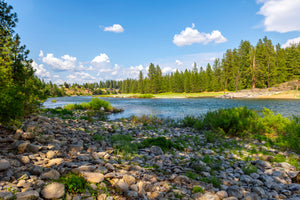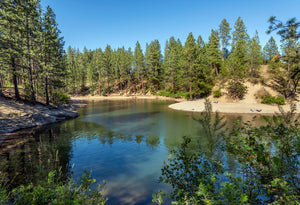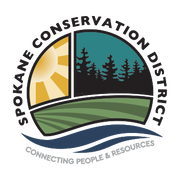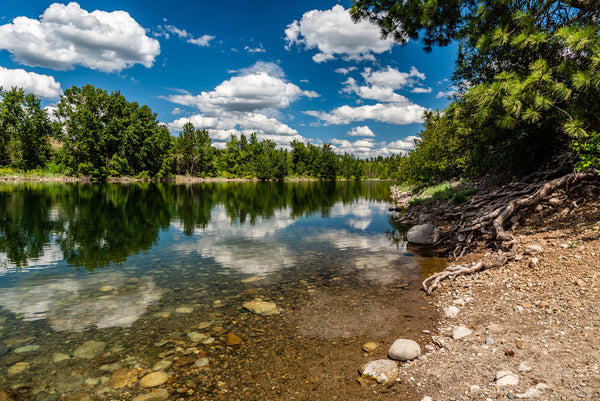
Save our shorelines!
The Water Resources Department provides technical assistance, information, and education, and we implement projects to protect, enhance, and maintain water quality in Spokane County.
Stream-side Living
The stream running through your land is part of a larger system known as a watershed. Every stream, tributary, or river has an associated watershed, and any activity that affects the water quality, water quantity, or movement in one location affects the water downstream. As a stream-side landowner, you have a particular responsibility to help maintain and improve the health of streams and stream-side areas.
If you own Spokane County shoreline you hold an important responsibility to protect and maintain one of the county's greatest resources… its shorelines! Naturalize your shoreline and enhance it with natural vegetation. Be creative – it’s your chance to make your lake healthier and to make your property a better fit for your lifestyle. Click here for more info. Or read the My Healthy Stream handbook for more information.

Access points near you
In April 2020, the Spokane Conservation District (SCD) visited Spokane River Access locations in order to photograph and visually assess the condition of access points during a heavy use period. Updates are presented from East to West, with any SCD work on particular locations called out.
Many of these accesses are either new or restored based on partnerships created by SCD and the Spokane River Forum (the Forum). SCD and the Forum are now working on regular assessments to determine when additional maintenance and improvements are needed. Annually, the Forum also sponsors and coordinates regular litter cleanup activities that SCD participates in.
In general, the Spokane River has seen a large uptick in river use. This can be attributed to a number of factors that include 1) increased presence and marketing strategies by the Spokane River Forum, 2) partnerships and fundraising with government and non-government organizations, and 3) participation and involvement by user groups. Foundational to development and restoration activities is the SCD’s ability to implement projects and access improvements utilizing WDFW mitigation and other funding sources, and working with the Forum to leverage these funds. As one measure of popularity, the Forum maintained Spokane River Water Trail website (www.spokanewatertrail.org) has received between 30 and 35 thousand page views annually since 2017.
Blog posts
Apr 21, 2025
Dartford Creek Restoration Project
Read more
Feb 29, 2024
Notice of Special Meeting
Read more
Jan 26, 2024
Deadman Creek Riparian Restoration
Read more
Ask Us a Question or Request Assistance
SCD is available to explore funding opportunities and financial aid programs that can support your conservation efforts. From grants and loans to cost-sharing programs, we can help you access the necessary resources to make your conservation projects a reality.
Do you have a resource concern? Tell us more here.


